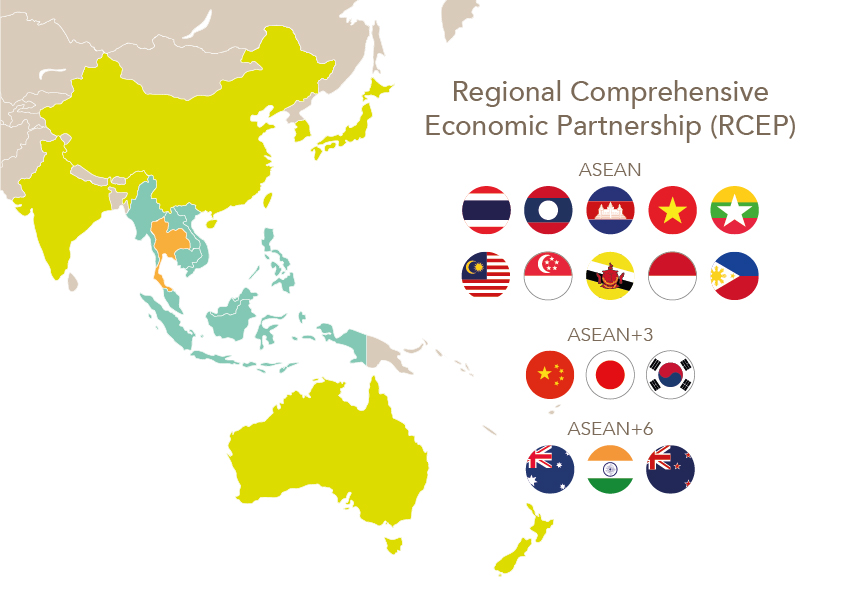
THAILAND, with its population of 66 million, stands at the heart of the ASEAN Economic Community, a 10-nation Southeast Asian common market of 671.7 million consumers. It has the 2nd largest economy in Southeast Asia. The IMF data shows that Thailand's GDP per capita, based on purchasing power parity (PPP), was estimated to be US$23,708 in 2024. In addition to its excellent connections with the fast-growing neighboring CLMV (Cambodia, Laos, Myanmar and Vietnam) countries, the powerhouse economies of nearby China and India are also easily reachable from Thailand by virtue of its world-class infrastructure for air, land, sea and rail transportation. It also boasts excellent digital connectivity, a highly skilled labor force and an excellent standard of living, making Thailand an outstanding value when considering its overall cost effectiveness. These factors, together with the Thai government’s comprehensive policies and investment incentives, make Thailand the preferred investment location in the region.
LOCATION & MARKET ACCESS
Thailand is well-connected to the fast-growing CLMV sub-region by excellent transportation infrastructure, including rail, road, water and airways. Businesses based in Thailand have access to a domestic market of 66 million people, with 52 million middle class consumers. Additionally, the CLMV region includes 175.28 million consumers located within 1,000 kilometers, ASEAN provides 671.7 million consumers all within 3,000 kilometers, while all of Asia within 5,000 kilometers includes 4.77 billion consumers. Ongoing national investment in and rapid development of Thailand’s logistics systems are helping to integrate the country’s transportation system with those of other emerging economies. This brings vast opportunities for cross-border trade and investment, making Thailand an ideal investment destination.
Thailand offers the rewards of almost tariff-free trade with 18 different nations, including major global economies such as Australia, China, New Zealand and South Korea, as well as the ASEAN community. Thailand has signed 14 FTAs. In 2021, Thailand has ratified the Regional Comprehensive Economic Partnership (RCEP) agreement which officially enters into force on January 1st, 2022 and covers nearly one third of the world economy and population.
DIGITAL INFRASTRUCTURE
The major development project is the Digital Park Thailand, which is located on 284 acres in Chonburi province, on the country's eastern seaboard coast. The park supports economic development by facilitating access to the submarine cable system, landing station and data center. Additionally, the National Science and Technology Development Agency (NSTDA) has established the Software Park Thailand in Nonthaburi to support and strengthen Thailand's software entrepreneurs competitiveness by promoting technology transfers, providing courses for the training of IT professionals, supporting local and international collaborations, and providing office facilities and rooms for conferences, meeting and training for software companies.
Moreover, enhanced incentives from the Thailand Board of Investment (BOI) have been established to encourage more investment in research and development (R&D) and engage the industry more actively in human resource development (HRD), and to attract additional investments in the growing semiconductor and digital industries.
TRADE SPOTLIGHT
Thailand stands as one of the foremost export hubs within the ASEAN region, boasting a prominent position as the world’s primary source of food and agricultural commodities, including rice and natural rubber. As per the Commerce Ministry's data, despite a marginal decrease of -1.0% in 2023, Thai exports remained formidable, amounting to US$284.6 billion, while imports experienced a -3.7% downturn, totaling US$289.8 billion. Thailand's top 5 export categories in 2023 were motor cars, parts and accessories, automatic data processing machine, precious stones and jewelry, rubber products, and refine fuels. Thailand's top 10 major trading partners in order from largest to smallest comprised the USA, China, Japan, Australia, Malaysia, Vietnam, Hong Kong, Singapore, India, and Indonesia.
COMPETITIVE BUSINESS COSTS
Prime office space in Bangkok, Thailand’s capital, is an outstanding value. As compared to other leading cities in the region, Bangkok is nearly half of the cost of Ho Chi Minh City, only 40% of the cost of Seoul and Singapore, and a quarter of the cost of New Delhi, Tokyo and Beijing. Wages are also quite reasonable for such a highly trained and educated workforce. As wages across the ASEAN region rise due to economic growth, the wage inflation rate in Thailand is among the lowest in the ASEAN region.
In addition to capital infrastructure, the Thai government is committed to capacity building in human resource development, especially in a Science, Technology, Engineering and Mathematics (STEM) education as part of its comprehensive strategy to become a regional leader in ASEAN. Thailand’s Ministry of Education partnered with the Southeast Asian Ministers of Education Organization (SEAMEO) to host the first two SEAMEO regional centers for STEM education and for Sufficiency Economy Philosophy for Sustainability.
As well, the government has designed a wide range of vocational education programs, including Dual Vocational Education and Training, Cooperative Education, Work-Integrated Learning (WiL) and Talent Mobility (TM), to ensure that Thai workforce has the right skills and is able to meet the requirements of future jobs, especially in emerging technologies such as robotics, automation and AI.
THE SECOND HOME OF INTERNATIONAL COMPANIES
As a regional economic center, with all its numerous advantages, it should come as no surprise that Thailand has become the second home for numerous global MNEs, and a supply chain hub for major industries. These foreign investment activities have been enabled by streamlining of government legislation, a growing domestic market, and access to resources such as finance and technical knowledge.
THE EASTERN ECONOMIC CORRIDOR (EEC)
Building on the success of the Eastern Seaboard, the Thai government is presently developing the Eastern Economic Corridor (EEC), a flagship megaproject that aims to become the ASEAN-leading economic zone for industrial, infrastructure, and urban development. Spanning over 13,000 sq.km. across the three provinces of Chonburi, Rayong, and Chachoengsao, the EEC has designated areas including the Eastern Airport City (EECa), the Eastern Economic Corridor of Innovation (EECi), Digital Park Thailand (EECd), Thammasat Integrated Medical Innovation Center (Pattaya) (EECmd), and additional promoted industrial estates/industrial zones. During the first five years, approximately US$ 50 billion of combined public and private investment projects are expected in the EEC. To further support innovation-led business within the EEC, the investment environment features numerous tax and non-tax incentives.
Source: Thailand Board of Investment, 18 Feb, 2024 / Retrived by 12 June, 2024


